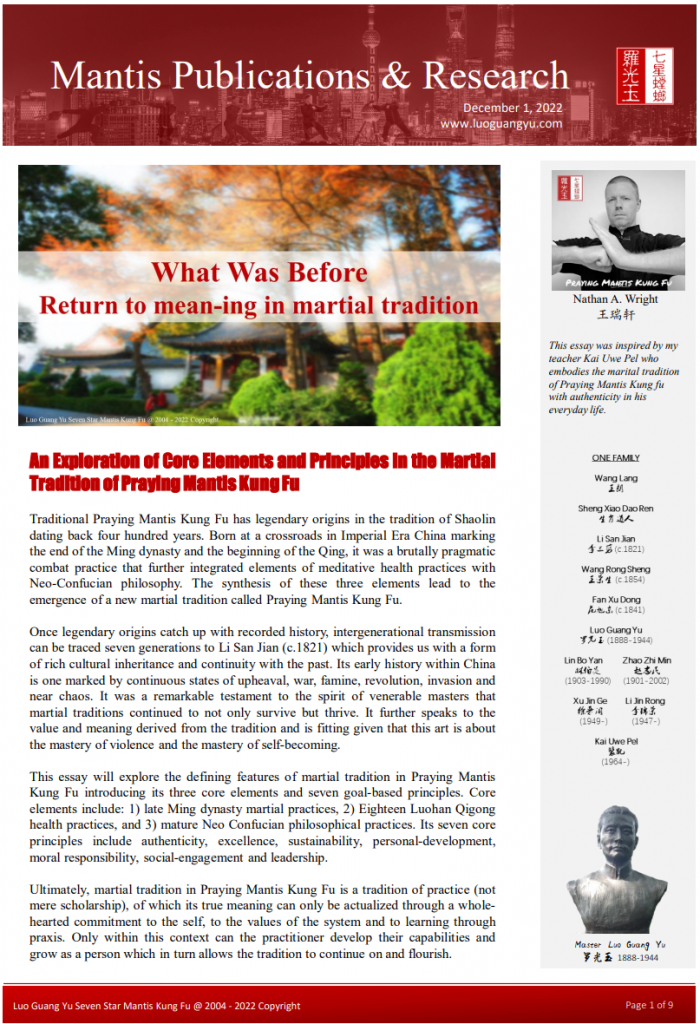
An Exploration of Core Elements and Principles in the Martial Tradition of Praying Mantis Kung Fu
Traditional Praying Mantis Kung Fu has legendary origins in the tradition of Shaolin dating back four hundred years. Born at a crossroads in Imperial Era China marking the end of the Ming dynasty and the beginning of the Qing, it was a brutally pragmatic combat practice that further integrated elements of meditative health practices with Neo-Confucian philosophy. The synthesis of these three elements lead to the emergence of a new martial tradition called Praying Mantis Kung Fu.
Once legendary origins catch up with recorded history, intergenerational transmission can be traced seven generations to Li San Jian (c.1821) which provides us with a form of rich cultural inheritance and continuity with the past. Its early history within China is one marked by continuous states of upheaval, war, famine, revolution, invasion and near chaos. It was a remarkable testament to the spirit of venerable masters that martial traditions continued to not only survive but thrive. It further speaks to the value and meaning derived from the tradition and is fitting given that this art is about the mastery of violence and the mastery of self-becoming.
This essay will explore the defining features of martial tradition in Praying Mantis Kung Fu introducing its three core elements and seven goal-based principles. Core elements include: 1) late Ming dynasty martial practices, 2) Eighteen Luohan Qigong health practices, and 3) mature Neo Confucian philosophical practices. Its seven core principles include authenticity, excellence, sustainability, personal-development, moral responsibility, social-engagement and leadership.
Ultimately, martial tradition in Praying Mantis Kung Fu is a tradition of practice, not mere scholarship, and its meaning can only be actualized through a whole-hearted commitment to the self, to the values of the system and to learning through praxis. Only within this context can the practitioner develop their capabilities and grow as a person which in turn allows the tradition to continue on and flourish.
To download the full pdf article, follow the link here, or click on the file document below.

DEC
2022
